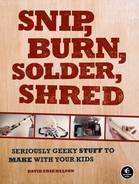Unlike Shut-the-Box (Chapter 6), which might have a romantic historical pedigree, the Tafl family of board games have bona fide Viking credentials. Go, similarly, has an established place in the strategic and tactical thinking of Japan’s shoguns, samurai, ninjas, and robot geishas.
Both Go and Tafl rely on the tension between strategy, which is the players’ over arching goal, and tactics, the immediate actions that need to be taken to achieve that goal. Go is a symmetrical game, in which both players have the same goal, pieces, and repertoire of tactics, while Tafl-type games are asymmetrical, fought out between unequal forces with differing capabilities and intentions. It is left as an exercise for the reader to determine how these differences have played out in terms of Western and Eastern approaches to foreign policy and international finance.
Go is usually played on a 19-line board; such games can be very long (several hours) and dauntingly intellectually exhausting, especially for beginners. A nine-line board is a great place to start and is also favored by seasoned players looking for a quick game. (Both board sizes are shown in Figure 8-1.) Although not all of the tactics and nuances of the small board translate to the full-size field, the fast pace of the smaller games facilitates a quick understanding of the game’s core principles.
Figure 8-1. A full-size Go board (left) and a nine-line Go board (right); the dots on the board are called stars.
There are many variants of Tafl, but the best understood is Tablut (Figure 8-2): dark raiders (who start in the T-shaped bases) try to capture a light king (guarded by eight king’s men) before he travels from his starting point at the board’s center (his throne) to any corner.
This pyrography (woodburning) project combines simplified variants of these two games onto a single board (shown in Figure 8-3). On our combined board, the Go board’s stars are rendered as boxes, and the Tablut board’s bases are Xs.
Woodburners look and function very similarly to soldering irons. They have roughly the same form factor, and a beginner’s woodburner generally heats to 600 to 900 degrees Fahrenheit. A 25-watt soldering iron (the kind normally used for soldering small projects, like those in this book) heats to about 750 degrees. The major difference is the tip: A woodburner has a brass tip shaped a bit like a very thick hobby knife, whereas a soldering iron tip is made of chromed or nickel-plated copper and usually shaped like a either a chisel or the point of a pencil. To use a soldering iron for pyrography, get a new, clean chisel-point tip (keep separate tips for soldering and woodburning). Since carbon build-up on the tip can be a problem while woodburning, you’ll want to keep a piece of fine-grit sandpaper on your workbench; occasionally dragging the tip down the sandpaper will clean it off and hone its edge.
Pine, which is both cheap and pale, is a good wood to use in a beginner’s pyrography project. You’ll want a board that is as free as possible from surface defects. Boards of this quality are often called B select and better and are used for finish carpentry, furniture making, and so on. Avoid knots, as they are full of sap and burn very slowly. This project calls for a roughly 10″ by 10″ chunk of pine. If you buy your wood at a large chain hardware emporium, you’ll likely have to get an entire 1″×10″ board (the shortest length is usually 6′) in order to get your 10″ by 10″ piece. Lumber yards, which are accustomed to working with carpenters who might just need a small piece to finish a project or make a repair, are sometimes willing to make deals and often have scraps or smaller pieces they’ll give you for free. Any lumber purveyor should be more than happy to cut the piece to size for you.



